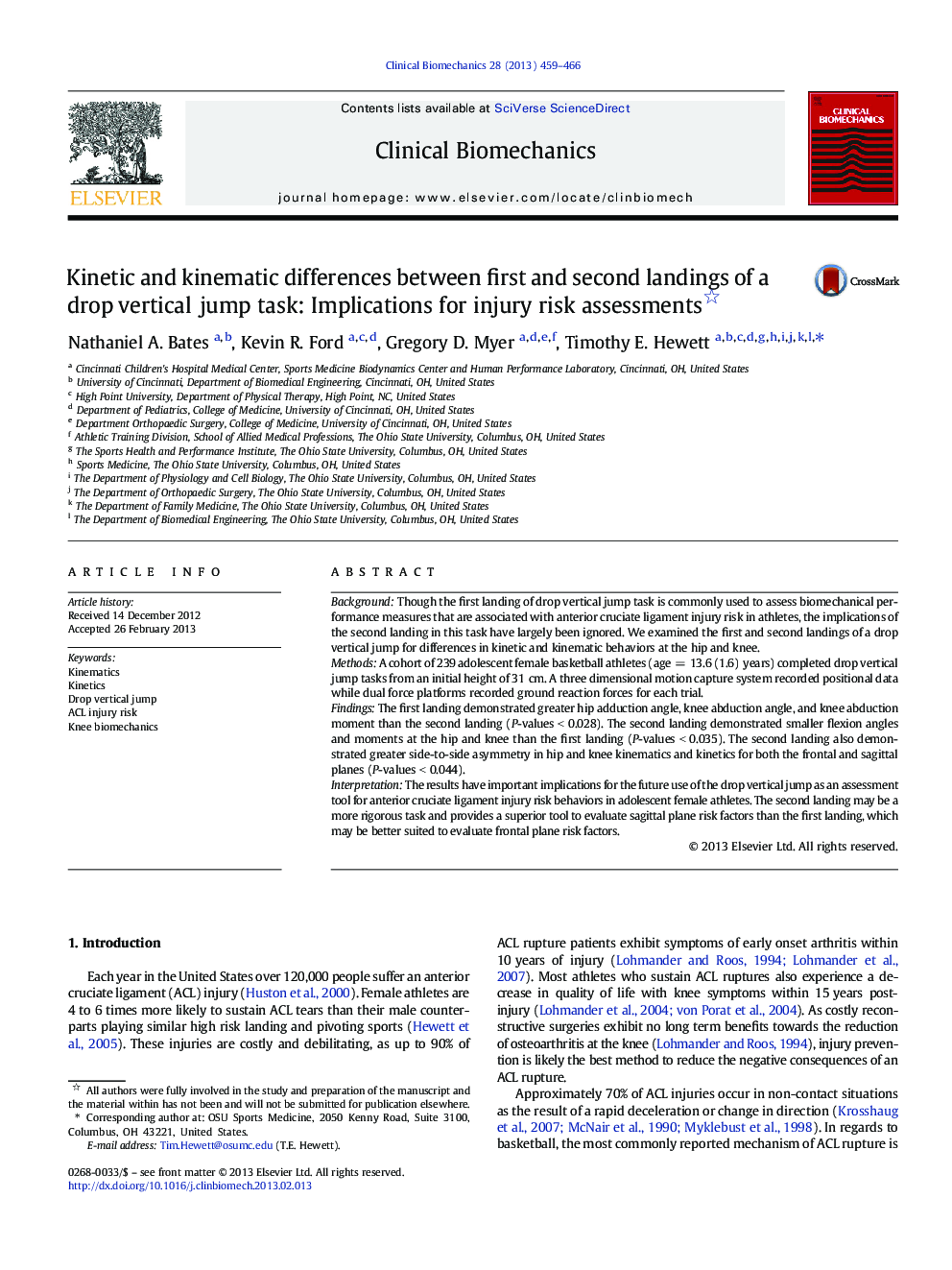| کد مقاله | کد نشریه | سال انتشار | مقاله انگلیسی | نسخه تمام متن |
|---|---|---|---|---|
| 6204960 | 1264930 | 2013 | 8 صفحه PDF | دانلود رایگان |
BackgroundThough the first landing of drop vertical jump task is commonly used to assess biomechanical performance measures that are associated with anterior cruciate ligament injury risk in athletes, the implications of the second landing in this task have largely been ignored. We examined the first and second landings of a drop vertical jump for differences in kinetic and kinematic behaviors at the hip and knee.MethodsA cohort of 239 adolescent female basketball athletes (age = 13.6 (1.6) years) completed drop vertical jump tasks from an initial height of 31 cm. A three dimensional motion capture system recorded positional data while dual force platforms recorded ground reaction forces for each trial.FindingsThe first landing demonstrated greater hip adduction angle, knee abduction angle, and knee abduction moment than the second landing (P-values < 0.028). The second landing demonstrated smaller flexion angles and moments at the hip and knee than the first landing (P-values < 0.035). The second landing also demonstrated greater side-to-side asymmetry in hip and knee kinematics and kinetics for both the frontal and sagittal planes (P-values < 0.044).InterpretationThe results have important implications for the future use of the drop vertical jump as an assessment tool for anterior cruciate ligament injury risk behaviors in adolescent female athletes. The second landing may be a more rigorous task and provides a superior tool to evaluate sagittal plane risk factors than the first landing, which may be better suited to evaluate frontal plane risk factors.
Journal: Clinical Biomechanics - Volume 28, Issue 4, April 2013, Pages 459-466
